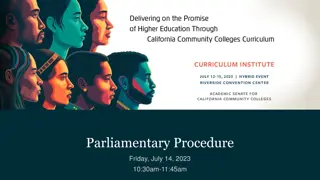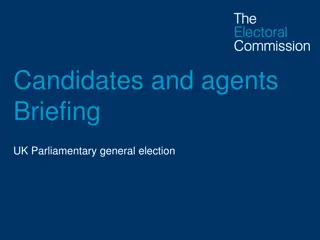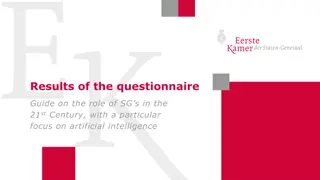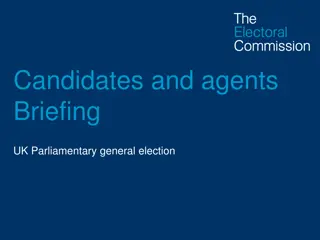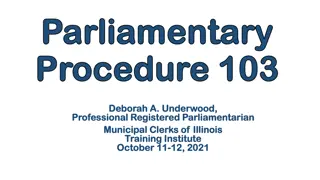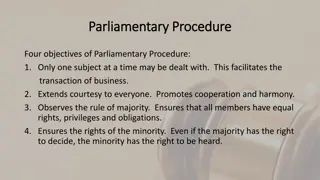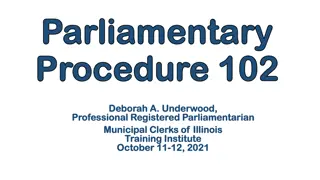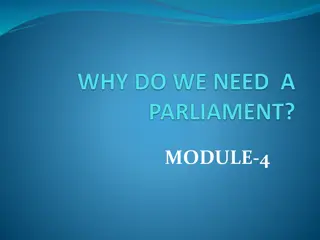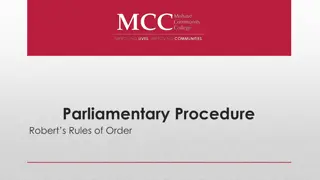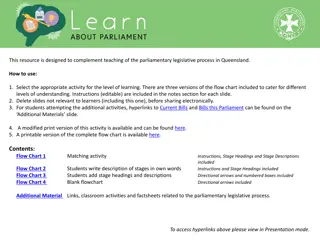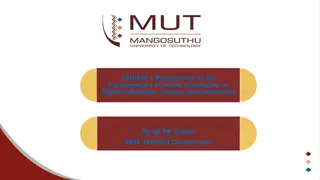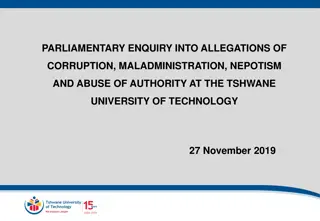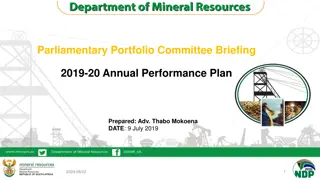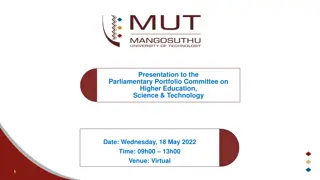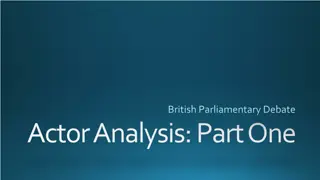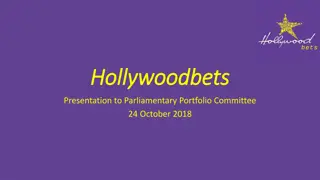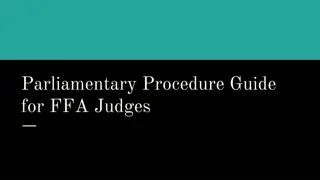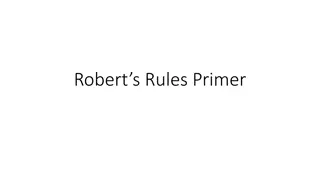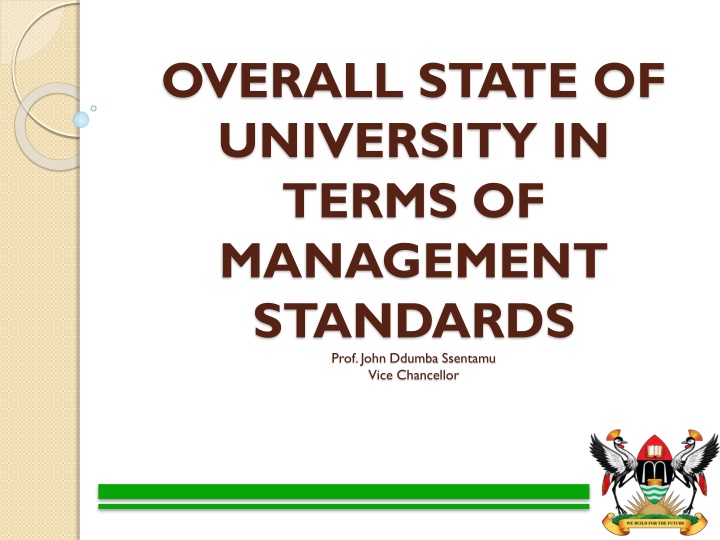
University Management Standards and Governance Overview
Explore an in-depth look at the overall state of university management standards, background information, vision, core functions, governance structure, and management hierarchy of a prominent educational institution led by Prof. John Ddumba Ssentamu, the Vice Chancellor. Established in 1922, the university has a rich history and a strong focus on academic excellence, research, and innovation. Discover its mission to provide responsive learning and services while maintaining a high rank in research productivity. Dive into the governance framework, management structure, and key administrative units driving the university's success.
Download Presentation

Please find below an Image/Link to download the presentation.
The content on the website is provided AS IS for your information and personal use only. It may not be sold, licensed, or shared on other websites without obtaining consent from the author. If you encounter any issues during the download, it is possible that the publisher has removed the file from their server.
You are allowed to download the files provided on this website for personal or commercial use, subject to the condition that they are used lawfully. All files are the property of their respective owners.
The content on the website is provided AS IS for your information and personal use only. It may not be sold, licensed, or shared on other websites without obtaining consent from the author.
E N D
Presentation Transcript
OVERALL STATE OF UNIVERSITY IN TERMS OF MANAGEMENT STANDARDS Prof. John Ddumba Ssentamu Vice Chancellor 1
Background information Established in 1922 as a technical college; In 1949 became a University College affiliated to the University College of London; In 1963 became one of the Constituent Colleges of the newly established University of East Africa; In 1970 became an independent University by an Act of Parliament; In 2011 restructured into a Collegiate system with 10 colleges; 2
Background information (cont d) 18 Affiliated institutions; Excellent Research Management Track Record; High Productivity and Efficiency in research; Strong Collaboration Networks Currently Makerere University ranked No. 3 on the continent 3
Vision and Mission statements Vision To be the leading institution for academic excellence and innovations in Africa Mission To provide innovative teaching, learning, research and services responsive to national and global needs 4
Core Functions Teaching and Learning; Research and Innovations; Knowledge Transfer Partnerships and Networking. 5
University Governance Guided by the Universities and other Tertiary Institutions Act 2001 as amended; Regulated by the National Council for Higher Education; University Council; the Supreme governing body; with various committees; Senate in charge of academic matters; 6
Management Structure Vice Chancellor Executive Head; Two Deputy VCs [F&A and AA] Central Management committee of 11 members College Principals [10]; Deputy Principals [10], School Deans [29], Departmental Chairs [92] 7
Management Structure (cont d) Administrative and Support Units headed by Directors a) Directorate of Research and Graduate Training b) Planning and Development Unit, c) Quality Assurance Directorate, d) Directorate of Information, Communication and Technology, e) Estates and Works Department f) Internal Audit g) Directorate of Human Resources, h) Directorate of Legal Affairs, i) Gender Mainstreaming Directorate j) Makerere Institute for Social Research k) Human Rights and Peace Center l) Makerere University Hospital m) Infectious Diseases Institute 8
The Collegiate System Has been operational since 2011 with 10 Colleges in place. These include: 1. College of Health Sciences (CHS); 2. College of Veterinary Medicine, Animal Resources and Bio- Security (CoVAB); 3. College of Agricultural and Environmental Sciences (CAES); 4. College of Computing and Information Sciences (CoCIS); 5. College of Engineering, Design, Art and Technology (CEDAT); 6. College of Natural Sciences (CoNAS); 7. College of Business and Management Sciences (CoBAMS); 8. College of Humanities and Social Sciences (CHUSS); 9. College of Education and External Studies (CEES); and 10. The School of Law. 9
Staffing Total staff of 3,362 [Academic Staff are 1461; Administrative staff are 347 while Support staff stands at 1554]. Makerere University is operating at 45% of the staff establishment and hence it is heavily understaffed. There is a Human Resources Manual in place and due to the ever changing dynamics of the university, is currently undergoing review. The Employment Act (2006) as ammended also guides the university in execution of its Human Resources mandate. Further elaboration by Director, Human Resources as programmed 10
Student body Makerere University Students Rules and Regulations were gazetted in September 2015. Inadequate and poor feeding of students. The University receives only UGX 4,000 per student per day for feeding as opposed to the realistic fee of UGX 10,000. Poor sanitary services in the Halls of Residence that have recently attracted the attention of Kampala City Council Authority. Poor state of Halls of Residence- Makerere University receives only UGX 160M for capital development and maintenance Further guidance on student matters to be provided by the Dean of Students 11
Academic Programs Programs offered by Makerere University are in line with the National Development Agenda. Senate has recently reviewed academic programs have been reduced from 450 to 253. Out of these, 130 are graduate programs. Academic Registrar, here present will provide details 12
Source of funding Annual Subvention allocated by the Ministry of Finance Planning and Economic Development This subvention captures Wage, Non-wage that caters for the operational costs of the university and Development of UGX 160 million per annum. Non Tax Revenue (NTR) Tuition and other fees paid by the students categorized as fee paying. This resource contributes to the wage bill and other operational costs of the University. The non-tax revenue is part of the overall university budget as approved by Parliament and is treated as Appropriation In Aid (AIA) by the consolidated account. 13
Source of funding (contd) Support from Development Partners Predominantly caters for research and development across the various disciplines. It includes bilateral support from governments; institutional support mainly from Foundations and project-based support that have specific areas of focus. Notable development partners over the past 10 years are the Government of Sweden under Sida, Government of Norway under NORAD, USAID, the National Institutes for Health, Carnegie Corporation of New York, the MasterCard Foundation. This is largely treated as off budget support to the University. 14
Makerere University Budget The total budget of Makerere University is UGX 226.38 billion, of which UGX 112.27 billion is Non Tax Revenue (NTR). Priority areas which are inadequately and/or not covered by the FY2016/17 allocations include: Staff recruitment; pension and other arrears; ICT related costs; research and renovations. 15
Unit cost The unit cost for humanities is UGX 6M per year while that of Sciences is UGX 12M per year. All Makerere University programs are far below unit cost. 16
Financial Sustainability Strategies Endowment Fund chaired by Dr. Martin J. Okec Aliker. The overall aim is to mobilize funds from friends and alumni. Makerere University Holding Company chaired by Mr. Charles Mbire; Its the productive arm for commercial investments in Makerere University. 17
Financial Sustainability Strategies (cont d) Health Insurance Scheme to reduce on the costs of treatment. Engagement of students to undertake minor renovations, painting and road works as part of their industrial training. Divest from catering in halls of residence to all Government supported students. 18
Financial Sustainability Strategies (cont d) In process of divesting in Management of Halls of Residence Install a pre-paid water and electricity metering system for the main campus based residences to cut utility costs. 19
Challenges 1. Wage bill: The University contributes UGX 2.6 billion monthly towards the wage bill. Implications for this are; a) that it draws resources from other university activities; b) affects the social security contribution drawn from Non Tax Revenue (NTR); 20
Challenges (contd) 2. Inadequate funding for capital development, infrastructure development and maintenance. Evidence: Dilapidated halls of residence; the University receives only UGX 160M for capital development, which is not enough to support renovation of halls of residence. Part of Lumumba Hall, the biggest male hall of residence, has remained closed for over 6 years. This continues to cause student unrest. Housing facilities. These are in a poor state and some have been condemned. 21
Challenges (contd) 3. Loss of University land: for example Katanga area 22
Challenges (contd) 4. Staff unrest Due to reasons beyond the control of Management. 23
Challenges (contd) 5. Staff attraction and retention: The University is operating at 45% of the total staff establishment of Makerere University. The University continues to lose highly qualified staff due to the uncompetitive salary structure especially at the ranks of Senior Lecturer, Associate Professor and Professor. The staff student ratio is high affecting teaching and learning 24
Challenges (contd) 6. Security of property and human resource: Properties including buildings, equipment and furnishing have been exposed to thefts and vandalism. The University would like to establish an electronic security system that will include CCTV cameras, electronic data cards for staff, students and visitors and a perimeter wall. 25
Conclusion In conclusion, I extend appreciation to the Government of Uganda for 1. Salary enhancement for all staff 2. Funds for Infrastructural Development [ADB Project] 3. Funding received under the Presidential Initiative for Science and Technology. THANK YOU 26

